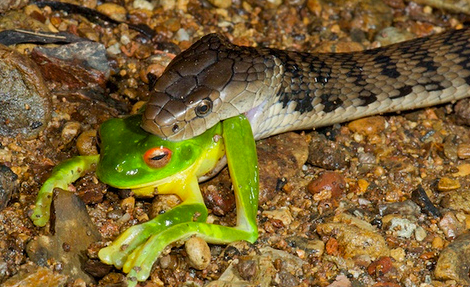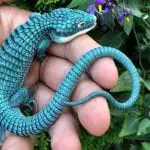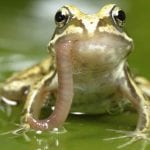Introduction
Frogs are amphibians that must watch out for a lot of predators or enemies in their environment. Their predators come in a variety. Some of them are birds, lizards, snakes, hedgehogs, and more. Aquatic frogs are not even safe from fish or other swimming mammals and even other hungry frogs. In order to survive, frogs have various ways to protect themselves from these savage predators and live longer.
Along with over 5,000 frog species, these species have developed their own protection. These include playing dead, swelling up, camouflaging, try to flee, and excreting poison. Frogs are a favorite food for most predators because they are weak and small. During these times, frogs must come up with useful traits for self-protection.
Escaping Strategies
Camouflaging
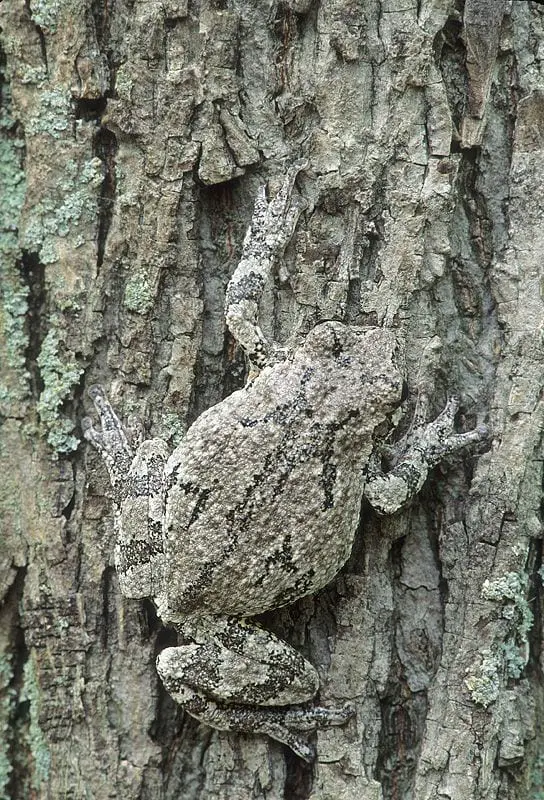
Camouflage, also called crypsis is a method used by an animal to match the surrounding it has. Frogs also use this method to avoid their predators. This cryptic coloration matches their lifestyle and habitat. They come in green, brown, and gray shade, black, red, and brown. In other words, the color should match where they live.
In the wild, birds, fish and snakes are the biggest enemies to frogs, and to hide from them needs various techniques. Birds hunt from above using their vision. Because of them, frogs have come up with color evolution. Camouflage coloration plays a very important role for the frogs to get away from birds. Snakes, on the other hand, use their olfactory cues, but some snake species make use of their vision. Fish utilize their visual and chemical cues. Frogs then camouflage to save themselves from threats in the water.
Other frog species are known for changing patterns and colors. For instance, the gray tree frogs become green to brown or gray in a split of the moment. The barking tree frogs show unicolor skin or dark spots to hide. In addition, frogs thermoregulate. They get darker when it is cool.
On the other hand, not all frogs camouflage well. Others are exceptional. Frogs in North America are so cryptic to hide from avian predators like an owl who reeds around a pond. The green tree frog blends well with trees as they sleep in the daytime. The American toad having earth tones color is invisible on the floors of the forest while the Surinam toad really looks like a dead leaf while the bird poop tree frog escapes by making itself look like a bird dropping. No wonder why it is named that way.
However, not all frogs camouflage, some frogs try to stand out with their contrasting patterns and bright colors. For example, the Poison dart frog releases a toxin in its body and use its bright color to warn their predator.
Playing Dead
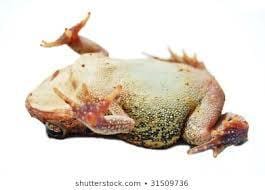
Playing dead is also called playing possum taken from opossums. This is the habit of feigning death when threatened with the hope that the predator will not have interests in a corpse. An animal will make itself lifeless and release a decaying smell. This is an adaptive behavior for animals that are at the bottom of the food chain. This is a common practice of animals that frogs also do.
This method has been a mystery with some risks. For this method to work, things should be in coordination. It is a form of gambling. This could be useless if the predator is fed on dead prey. Some predators postpone eating, making the frog run away, or otherwise, the frog could still be eaten more easily. In cooler temperatures, frog regardless of size using this method, but if the predator insisted, then they have no choice but to jump. Larger frogs jump farther, so jumping is more effective.
Poison Glands
Amphibians release various chemicals from their skin glands to protect themselves from predators, pathogens, and parasites. Most frogs secrete that poison when attacked by predators. When inside the mouth, the predator spits the frog out due to the poison. The parotid glands release poisons called bufotoxin, which causes small animal deaths and human allergy. Predators then avoid them not to touch the substance.
A clear example is the poison dart frog found in South and Central America. They have bright colors connected to their toxicity. Some of them show their bright colors with a high level of toxicity. They take this toxicity from foods like termites, mites, and ants. The poison is found at the tip of their blow darts.
Puffing Up
For frogs to make themselves bigger, they take in extra air and force their vocal sacs found on their neck to be bigger. They fill this sac with air and don’t release the air. They can expand and really look big. In other words, they inflate themselves their necks like a balloon. It will try to look too big to be a food and cannot be swallowed.
Flashing
Some frog species possess bright colors on or under their legs that flash when they move, causing confusion to the predators. The predator is then distracted, giving a chance for the frog to leap safely and quickly. The barred leaf frog is a great example of this. Little stripes are under its legs, and when it runs, it flashes.
Fake Eyes
The frog Chilean Four-eyed frog possesses a pair of eyespot marks. They are found on the rear end. These spots are big and poisonous that look like eyes from behind. These spots are covered by their thighs while the frog sits. However, as soon as it feels the presence of a predator, the fake eyes spots are exposed and swollen a little bit. This will make the frog bigger and meaner in front of the predator.
Quick Leap
An undeniable frog’s ability is jumping and leaping. They use their long legs for quick and powerful jumps to run away from their predators. It can leap instantly and hide in the water safely. However, not all frogs can jump. As a matter of fact, many frog species jump over 20 times the length of their bodies.
How Can Prey Avoid Being Eaten
Again, frogs face dangers being food to their predators. If they die, then their genes are gone too. No more offspring for them. Predation is pressure on any prey. To avoid being eaten, frogs must be to know threats and use efficient strategies to avoid being detected by their predators. However, in case they fail, they should use behaviors to prevent the predator from attacking them and come up with tactics to increase the survival rate.
Detecting Predators
In order for a frog to avoid and positively respond to predation, it must then identify first the presence of a possible predator. This will stimulate the first behavior. For some animals, it is innate. In some programs given to captive animals, programs are taught in order for them to react to predators after releasing them in the field. Some cues that a threat is present are sudden movement, a looming object, or scent or appearance.
Frogs can depend on their sensory modes like chemical, visual, tactile and auditory senses
- Visual
Visual cues include the existence of a novel object or sudden movements. The predators’ behavior and size also give information. A frog can know to identify based on the predator’s color, size, and shape. In terms of behavior, for instance, a courting or feeding predator would likely be a lesser threat to the frog. However, if the frog’s habitat has low visibility, it has to use other cues to determine the presence of any predator.
- Chemical
This is the use of chemical cues. Chemicals could be in the skin of lipids and urine. The chemicals can be determined in the water, air, or ground and could be detected using the olfaction and gustation. In fact, some animals can know how old is the scent of the predator. The change in the scent’s concentration and age helps the prey know which direction the predator is going. With this, the frog knows where to go to avoid it.
- Auditory
The use of auditory cues is direct and reliable about the predator’s identity, proximity, presence, and direction. For nocturnal animals, this cue is helpful since they use sound for hunting and communicate.
- Tactile
This is sensing vibration. It would be difficult for the predator to conceal it. Some prey use vibrations as an indication of a predator. Frogs should be able to determine cues from either the threat or non-threats. To be able to respond to non-threats would just be a waste of energy and time for the frog and could even the attraction of the predator.
Avoiding Predators
After determining the presence of a predator, the prey must take appropriate action to avoid an encounter with the threat. To avoid, the predator must not detect the prey. The frog can temporarily avoid the predator. It is possible by avoiding the predator’s habitat, being active opposite to the predator’s active time, or changing activity. Frogs can remain quiet too to minimize their presence.
Another way of camouflaging is not only in changing color but also in the scent. Some prey like the squirrel chew a skin of rattle skin, spread on the fur. Then, they smell like the snake and not a squirrel.
Surviving Encounters with Predators
Preys have some strategies to survive after being detected by their predators. They can deter the predator’s attack by flight, intimidation, fighting back, or deception. If frogs come in a large group, the mob and drive the predator away before it performs an attack. If the predator is not too near the frog, the frog can escape. If otherwise, the frog can appear dead or make a loud noise.
Conclusion
Predation is part of the food chain. However, preys have the right to survive. Despite being faced with various predators. They have the ability to live longer if they employ an efficient strategy, such as flashing, playing dead, using their poison glands, and puffing up. These strategies are essential for survival and in balancing the ecosystem.

